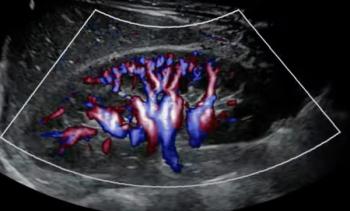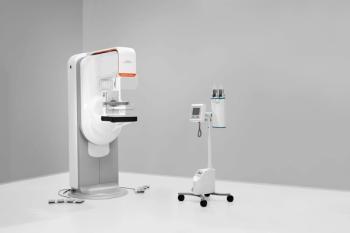
Siemens plans release of noncontrast-based imaging technique
Siemens Medical Solutions plans to begin marketing by year-end a hardware-software combination that supports arterial spin labeling, a noncontrast-based imaging technique, as part of an integrated package for the assessment of ischemic stroke.
Siemens Medical Solutions plans to begin marketing by year-end a hardware-software combination that supports arterial spin labeling, a noncontrast-based imaging technique, as part of an integrated package for the assessment of ischemic stroke.
The technology, currently in development, will allow a comprehensive evaluation of ischemic disease, according to Jeffrey M. Bundy, Ph.D., senior director of MR R&D for Siemens. It will correlate structural and functional data and diffusion and perfusion data obtained not only through arterial spin labeling but through methods including blood oxygen level-dependent contrast.
"It's not a stand-alone technique, but it will be integrated into other tools that we already have as a product," Bundy said.
Siemens will acquire these data using 3T, improved radiofrequency, and a 12-channel head coil. A 32-channel coil is in development. The company also plans to offer a 1.5T version, which will use similar technologies, including a 12-channel head coil.
"To do this, you need all the pieces," he said.
Arterial spin labeling visualizes blood flow without enhancement by contrast agents. The ability to do so depends on having enough signal to noise to distinguish changes in tissue magnetization resulting from blood versus tissue water. The increased signal-to-noise ratio allows for a more precise visualization of the affected brain area than can be achieved with conventional methods, according to Ionnis Panagiotelis, Ph.D., market manager for the ultra high-field segment at Siemens.
Siemens is releasing the brain assessment package with arterial spin labeling initially to luminaries in academia and clinical practice who have served previously as research collaborators. The goal will be to gain experience with the technology and validate its clinical utility. A broader commercial release is expected by the end of the calendar year.
"Providing it within our standard neuro tools will allow customers to integrate arterial spin labeling very quickly and easily in their daily workflow," Bundy said.
Newsletter
Stay at the forefront of radiology with the Diagnostic Imaging newsletter, delivering the latest news, clinical insights, and imaging advancements for today’s radiologists.




























